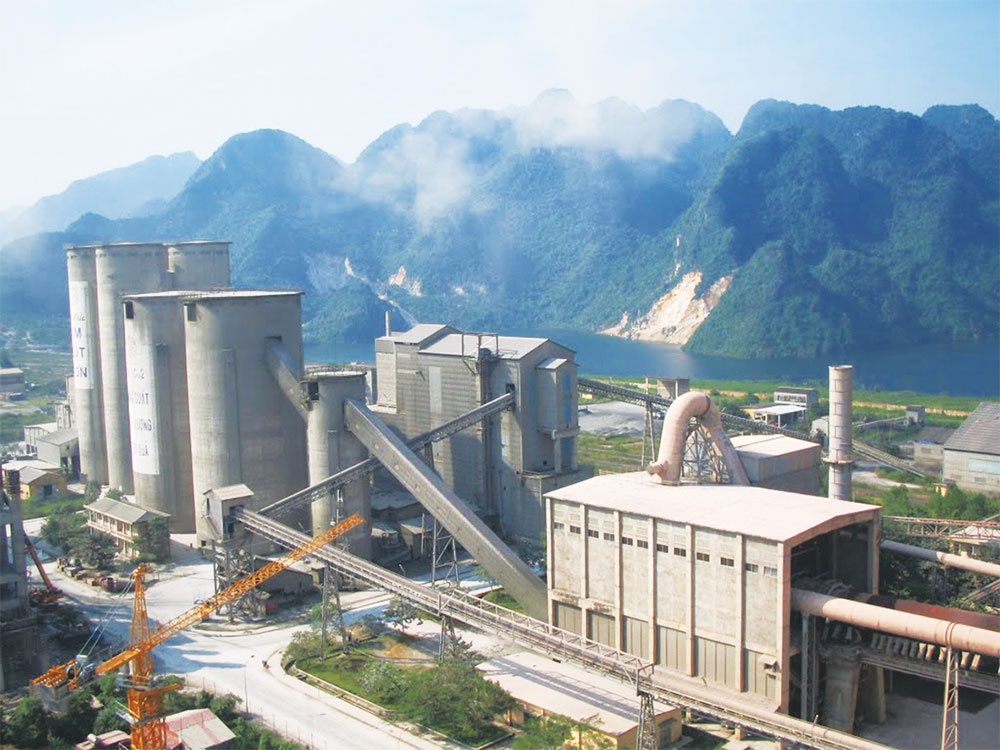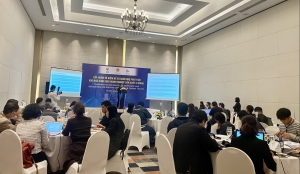Cement groups tangle with GHG inventories
There are around three months left for cement manufacturers to submit greenhouse gas (GHG) emission data to the Ministry of Construction (MoC) so that the ministry can conduct GHG inventory figures to cover 2022. However, many manufacturers are still confused over how to collect and summarise the data.
 |
| Photo: Dung Minh |
According to Decree No.06/2022/ND-CP on mitigation of GHG emissions and protection of the ozone layer, cement manufacturers will have to submit GHG emission data to the MoC before March 31, 2023. From 2024, businesses will be responsible for this work with a biennial frequency.
However, Luu Linh Huong, senior specialist of Science, Technology, and the Environment under the MoC, said it faces trouble in collecting accurate GHG statistics from cement manufacturers because the companies do not have specific guidelines for collecting such information.
“We are working with the Vietnam Institute of Building Materials and two consultancy firms to build solutions for calculating the emissions,” Huong said. “However, three units are still working independently. We want the three parties to sit down together to build a synchronised tool that offers a convenient and simple calculation for manufacturers.”
Conducting GHG inventories of cement groups is an urgent requirement because cement production is the segment in construction that is most vulnerable to long-term climate risks due to large and direct carbon emissions that require expensive decarbonisation technologies. Around 8 per cent of global CO2 emissions came from cement production in 2021, at 2.9 billion tonnes.
Meanwhile, Vietnam is one of the developing countries with the highest vulnerability to climate change. The demand for cement and building material is still set to grow at a high level until 2030. Related emissions are mainly from the production process and fuel combustion, which are still high in this country.
An emission reduction scheme approved in the Nationally Determined Contribution (NDC) is divided into two phases, covering to 2025 and then 2030. To keep on track, the prime minister promulgated Decision No.01/2022/QD-TTg on the list of sectors and facilities subject to GHG inventories, effective since January.
Accordingly, six specific sectors and hundreds of facilities will have to implement GHG inventories. The facilities include 1,660 in the industry and trade sector, 70 facilities in transport, just over 100 in construction, and around 75 in natural resources and the environment. In the construction sector alone, around half of the facilities operate in cement production.
At present, cement firms in particular are calculating GHG emissions based on protocols of the Intergovernmental Panel on Climate Change 2006.
Nguyen Tien Hai, technical expert at a project supporting the planning and implementation of the NDCs in Vietnam, sponsored by Japan International Cooperation Agency, told VIR, “Cement manufacturers started to study tools to implement GHG inventories and they meet many troubles in collecting and summarising specific data at facilities methodically and enough. They reflect that this work is complicated,” Hai said.
GHG inventories is currently not a compulsory mission until 2024, and so many manufacturers have yet to be aware of its importance, Hai added.
“If businesses are slow to react, they will face challenges once forced to implement this work in 2024, simultaneously reducing their competition capacity on global markets that have plans to tighten the number of imported goods coming from countries with large emissions,” Hai said.
As of the end of 2021, Vietnam ranked fifth in world cement production, following China, India, the US, and Russia, with 65 clinker production plants and 14 cement grinding plants, mostly located in the north of the country.
Vietnam is the biggest exporter of cement globally with an export value of $1.4 billion in 2020, equalling 12.5 per cent of the global cement exports. The industry capacity of Vietnam cement reached 110 million tonnes per year in 2021. National cement consumption accounted for 68 per cent, and the remainder is for export.
Nguyen Thi Tron, environment and compliance manager at INSEE Vietnam, said, “We expect that the GHG inventories will be implemented methodically so that authorities and businesses can calculate accurately. At present, the statistics have yet to be accurate because only members joining the cement association participate in summarising the GHG emissions.”
Having accurate statistics is significant because it is the foundation to determine the GHG emission volume that manufacturers want to decrease. After that, they will invest in suitable technology for the adjustment.
“For example, if the collected data is lower than the real emissions, the investment in modernising the technology will not be effective,” Tron said.
 | The Philippines assists in reducing hurdles for Vietnam's cement exports An agreement to export cement and clinker to the Philippines is a bright spot for the Vietnamese cement industry's demand-supply mismatch. |
 | Training on GHG emissions for private cement companies 50 cement manufacturers joined a 2-day training course on greenhouse gas (GHG) emissions inventory and mitigation from December 14 to 15. |
What the stars mean:
★ Poor ★ ★ Promising ★★★ Good ★★★★ Very good ★★★★★ Exceptional
Related Contents
Latest News
More News
- Acecook Vietnam: 30 years of creating happiness (January 08, 2026 | 08:00)
- Sustainability a core value for DKSH’s vision (January 07, 2026 | 16:00)
- People encouraged to contribute and grow at AstraZeneca Vietnam (January 07, 2026 | 15:48)
- Dat Bike accelerates sustainable mobility (January 07, 2026 | 15:24)
- Innovation to support modern healthcare development (January 07, 2026 | 10:00)
- Six localities record double-digit growth as regional performance diverges in 2025 (January 06, 2026 | 18:00)
- E-commerce market undergoes transformation amid rising competition and regulation (January 06, 2026 | 17:54)
- Vietnam’s industrial output hits seven-year high in 2025 (January 06, 2026 | 17:47)
- GELEX’s credit rating outlook upgraded to 'Positive' by VIS Rating (January 06, 2026 | 16:49)
- Finance sector lays firm groundwork for 2026 after major reform (January 06, 2026 | 15:30)

 Tag:
Tag:



















 Mobile Version
Mobile Version